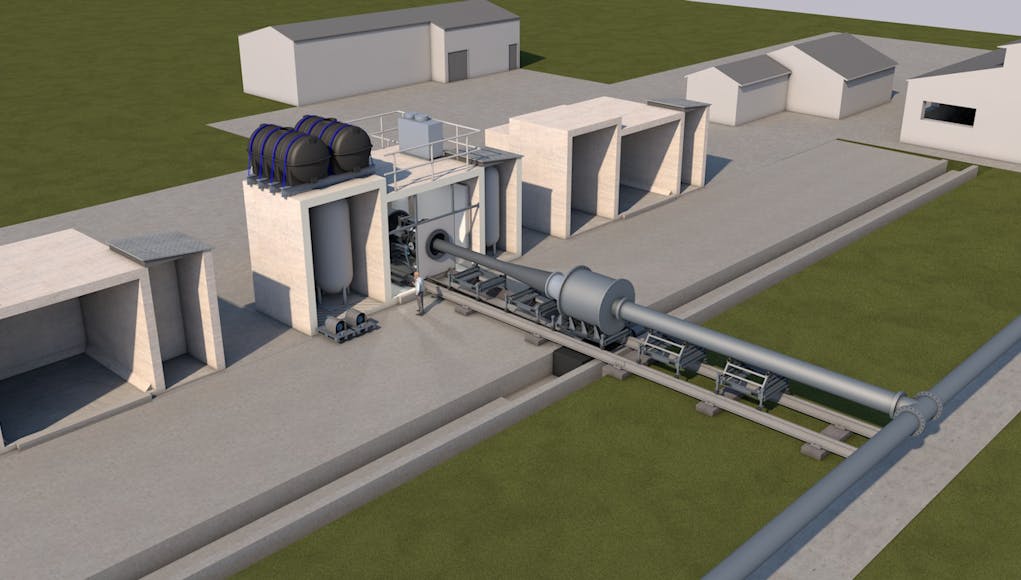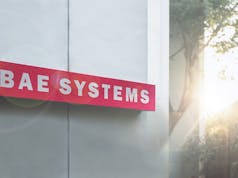A new “gold standard” national rocket test facility will soon open its doors, Science Minister Amanda Solloway has announced.
The Government say that the new centre will allow UK companies and academics to fire up and test state-of-the-art space propulsion engines at up to 1.5kN in high-altitude vacuum, an equivalent test altitude of 140,000ft.
“Based in Aylesbury Vale Enterprise Zone, the facility, which is expected to create around 60 jobs, is due for completion in early 2021 and will offer companies a more affordable test facility than international rivals. It will also allow new types of more sustainable propellants to be tested, such as Hydrogen Peroxide and Liquid Oxygen which are more environmentally friendly in sourcing, storage and combustion.
At present, companies can test extremely small engines in the UK but have to go overseas to test bigger engines. The new facility will tackle this issue and help grow the UK’s status as a leading space player, giving industry resources that allow us to grow our technological edge. Designed to support the growth of brand-new space technologies, the government is backing the new facility, dubbed the National Space Propulsion Test Facility (NSPTF), to the tune of £4 million in funding.”
Science Minister Amanda Solloway said:
“The UK’s space industry is booming as we invest in our brightest space scientists, the facilities they work in and the technologies they are creating. Backed by a £4 million government investment, this pioneering UK-based facility will elevate our most ambitious space businesses, enabling them to undertake complex spacecraft engine testing, while boosting the local economy by creating highly skilled jobs.”
How does the engine test work?
- Engines will be fired up in a vacuum from early 2021, with a mechanical pump system generating a vacuum down to 1.5 milliBar in a test cell containing the engine; an equivalent test altitude of approximately 140,000ft, which ensures technology can be deemed ready for the space environment.
- When firing, the pressure of the engine’s exhaust plume is partially recovered by a 7-metre-long supersonic diffuser and then cooled by a heat exchanger designed to rapidly reduce temperatures in excess of 2,000°C to just 50°C.
- The gasses then travel along a vacuum manifold to be recovered to ambient pressure by the pump system in the vacuum generation plant.
The UK space sector is already a leader in satellite propulsion and, with a growing space manufacturing sector and plans for UK spaceports, the satellite propulsion field is set to grow substantially in the coming years.
This facility, partly funded by the ESA, will allow further innovation for the type of orbit-raising and station-keeping engines this facility will be able to test and it is the first step in a plan to test larger engine types.












Wasn’t there also a rocket research site at one time at Westcott or something like that? That’s nearby I think?
Hi Daniele,
Apparently there still is and it is also being upgraded.
https://westcottspacecluster.org.uk/company/uk-propulsion-centre/
Looks like HMG has gone from studied indifference to space flight to considered enthusiasm. When I was at uni. the governments of the day were deffinately cool on space projects, sadly.
Cheers CR
Just had another look at the website and the list of companies on site include:
Looks like an exciting group of companies with a bright future.
I am so looking forward to seeing horizontal satellite launches from Newquay Airport. Hopefully, I’ll get to watch a Reaction Engines Skylon derived space plane fly from the UK before I shuffle of this mortal coil. We used to read about and discuss HOTOL at uni. only to see it get the chop. That was a career ago…
Now I’m feeling old.
Cheers CR
Seems the site described as Aylesbury in the article and the old RAF Westcott RRE are one and the same.
I think you’re right. Just checked the Alesbury Vale Enterprise Zone and it appears to consist of 3 sites, Silverstone, Arla Woodlands (nr Aylesbury) and Westcott…
Cheers CR
And entirely logical given that area of the UK also has Harwell, RANL, and Culham.
Why is the government not funding Reaction Engines more.
Their air breathing rocket motor and heat exchanger tech had huge potential
Has anyone said officially research with reaction engines has stalled?
No – it has just about the opposite of stalled. Don’t know what this fella is moaning about
My thoughts exactly. A good news story, yet some people’s default setting is to moan about something.
Its not stalled, lot of big players have been buying in to the latest funding round.
If people read my original post you will see that I wasn’t moaning or knocking a good news story. I have followed Reaction Engines for many years and simply want to see the technology properly funded so it can progress
“Why is the government not funding Reaction Engines more” sounds a lot like moaning Mike, even if you didn’t mean to.